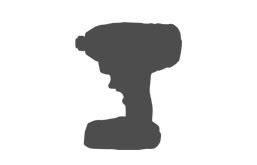Quick Select
Select specific models or manufacturers you want to see
Comparison tables not only compare products they organize product details into a normalized readable format. SpecLook does the hard work for you by finding all of the information from multiple sources, normalizing the values, and organizing all that data into easy to read tables. SpecLook tables allow you to search, sort, and filter, making it easier to find the details that are most important to you.
The comparison table on this page shows all products available for this type. You can use the filters section next to the table to narrow down the listings, OR you can select only the products and/or manufacturers you would like to see by selecting them here and then clicking the Customize Table button.
Most Popular
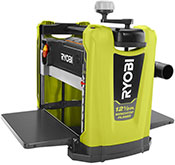
Most Popular
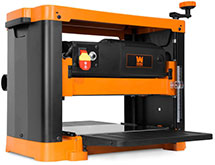
Others
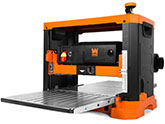
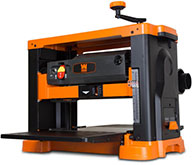
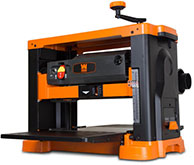
Most Popular
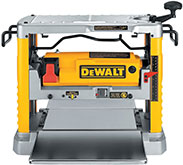
Others
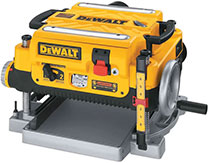
Most Popular
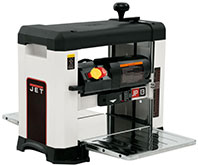
Most Popular
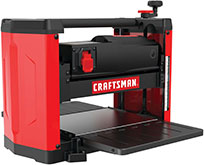
Most Popular
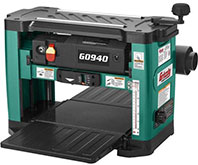
Others
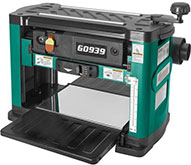
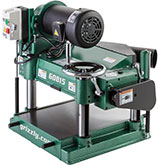
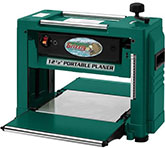
Most Popular
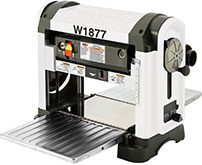
Most Popular
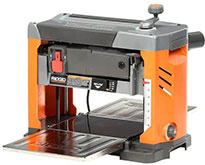
Others
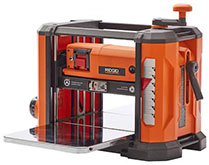
Most Popular
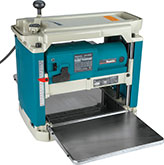
Most Popular
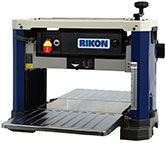
Need help choosing which product fits you best? Click Here
Comparison Awards
Awards are based on the comparison of details and specifications gathered for each product. SpecLook does not favor or promote any specific products or manufactures over any others.
Filters
You can also sort some of the columns by clicking the column titles.
Compare Benchtop Thickness Planers
(Hold Shift while scrolling to scroll horizontally)
| Product | Compare | Image | Category | Manufacturer | Model | Avg. Price | Links | Avg. Rating | Total Rating Count | Ratings | Dimensions (HxWxD) | Weight | Power Type | Battery System | Motor Type | Amps | Battery Type | Voltage | Cord Length | Cutterhead Type | Number of Blades | Max Speed | Feed Rate | Board Thickness (Max) | Board Width (Max) | Max Cut Depth | Included | Extra Features | Certifications | Manufacturer Warranty | Price |
|---|---|---|---|---|---|---|---|---|---|---|---|---|---|---|---|---|---|---|---|---|---|---|---|---|---|---|---|---|---|---|---|
| Ryobi 12-1/2" THICKNESS PLANER (AP1305) |
 Image provided by: www.ryobitools.com Image provided by: www.ryobitools.com |
Thickness Planers | Ryobi | AP1305 | 1 | Check Price at Amazon | 4.380 | 390 | Home Depot4.3 / 5.0 (284) Ryobi4.6 / 5.0 (106) |
25.7 in x 15.6 in x 20.9 in (65.28 cm x 39.62 cm x 53.09 cm) |
72.88 | Corded | 15.000 | 120 | 72 in (182.88 cm) |
Straight | 2 Blades | 18,800 | 23.5 FPM | 6.000 | 12.500 | 0.125 | Blade(s), Knife Removal Tool, Hex Key | Dust Hood, 2-1/2" Dust Port | UL Listed | 3 Year Limited | Check Price at Amazon | ||||
| Wen 15A 12.5" 2-Blade Benchtop Thickness Planer (PL1252) |
 Image provided by: www.wenproducts.com Image provided by: www.wenproducts.com |
Thickness Planers | Wen | PL1252 | 1 | Check Price at Amazon | 4.300 | 592 | Home Depot4.3 / 5.0 (577) Wen4.4 / 5.0 (15) |
18.25 in x 23.5 in x 22 in (46.36 cm x 59.69 cm x 55.88 cm) |
55.60 | Corded | 15.000 | 120 | Straight | 2 Blades | 10,000 | 26 FPM | 6.000 | 12.500 | 0.125 | Reversible Blade(s), Hex Wrench | 2" Dust Chute | CSA Certified | 2 Year Limited | Check Price at Amazon | |||||
| Wen 15A 13" Spiral Benchtop Thickness Planer (PL1326) |
 Image provided by: www.wenproducts.com Image provided by: www.wenproducts.com |
Thickness Planers | Wen | PL1326 | 1 | Check Price at Amazon | 4.620 | 244 | Home Depot4.6 / 5.0 (196) Wen4.71 / 5.0 (48) |
19.75 in x 13 in x 23.75 in (50.17 cm x 33.02 cm x 60.33 cm) |
63.70 | Corded | 15.000 | 120 | Spiral | 26 Blades | 10,000 | 26 FPM | 6.000 | 13.000 | 0.125 | Rotatable HSS Blade(s) | 2-1/2", 4" Adjustable Dust Port | CSA Certified | 2 Year Limited | Check Price at Amazon | |||||
| Wen 15A 13" 3-Blade Benchtop Thickness Planer (PL1303) |
 Image provided by: www.wenproducts.com Image provided by: www.wenproducts.com |
Thickness Planers | Wen | PL1303 | 1 | Check Price at Amazon | 4.400 | 310 | Home Depot4.4 / 5.0 (300) Wen4.4 / 5.0 (10) |
24 in x 20 in x 28.25 in (60.96 cm x 50.8 cm x 71.76 cm) |
63.00 | Corded | 15.000 | 120 | Straight | 3 Blades | 10,000 | 26 FPM | 6.000 | 13.000 | 0.125 | Reversible SK5 Blade(s) | 2-1/2", 4" Dust Port | CSA Certified | 2 Year Limited | Check Price at Amazon | |||||
| Dewalt 13" 3-Knife 2-Speed Thickness Planer (DW735) |
 Image provided by: www.dewalt.com Image provided by: www.dewalt.com |
Thickness Planers | Dewalt | DW735 | 2 | Check Price at Amazon | 4.280 | 508 | Dewalt3.8 / 5.0 (101) Home Depot4.4 / 5.0 (407) |
18.75 in x 22 in x 24 in (47.63 cm x 55.88 cm x 60.96 cm) |
91.75 | Corded | 15.000 | 120 | Straight | 3 Blades | 20,000 | 14 FPM, 26 FPM | 6.000 | 13.000 | 0.125 | Reversible Blade(s), Dust Hose Adapter, Blade Change T-Wrench | 4" Dust Port (Adapter Included), 2 Speed Gearbox | UL Listed | 3 Year Limited | Check Price at Amazon | |||||
| Dewalt 12-1/2" Thickness Planer with Three Knife Cutter-Head (DW734) |
 Image provided by: www.dewalt.com Image provided by: www.dewalt.com |
Thickness Planers | Dewalt | DW734 | 1 | Check Price at Amazon | 4.380 | 518 | Ace Hardware4.6 / 5.0 (62) Dewalt4 / 5.0 (61) Home Depot4.4 / 5.0 (395) |
10 in x 16 in x 5 in (25.4 cm x 40.64 cm x 12.7 cm) |
80.00 | Corded | 15.000 | 120 | Straight | 3 Blades | 10,000 | 24 FPM | 6.000 | 12.500 | 0.125 | Rotatable Blade(s), Dust Hood, 4" Adapter Sold Separately (DW7331), Blade Change T-Wrench | Turret Depth Stop | CSA and UL Listed | 3 Year Limited | Check Price at Amazon | |||||
| Jet 13" 2HP Benchtop Planer with Helical-Style Cutterhead (722130, JWP-13BT) |
 Image provided by: www.jettools.com Image provided by: www.jettools.com |
Thickness Planers | Jet | 722130 | 2 | Check Price at Amazon | 3.940 | 26 | Acme Tools5 / 5.0 (1) Home Depot3.9 / 5.0 (25) |
20.5 in x 13 in x 25.6 in (52.07 cm x 33.02 cm x 65.02 cm) |
82.00 | Corded | 15.000 | 115 | Helical | 24 Inserts (6 Row) | 10,000 | 18 FPM, 26 FPM | 6.000 | 13.000 | 0.125 | 2-Edged HSS Blades | 4" Dust Port, 2 Feed Rate Settings, Removable Safety Key | 3 Year Limited | Check Price at Amazon | ||||||
| Craftsman 15A Benchtop Thickness Planer (CMEW320) |
 Image provided by: www.craftsman.com Image provided by: www.craftsman.com |
Thickness Planers | Craftsman | CMEW320 | 1 | Check Price at Amazon | 3.700 | 43 | Ace Hardware3.8 / 5.0 (22) Craftsman3.6 / 5.0 (21) |
23 in x 15 in x ? in (58.42 cm x 38.1 cm x ? mm) |
64.80 | Corded | 15.000 | 120 | 72 in (182.88 cm) |
Straight | 2 Blades | 8,000 | 26 FPM | 6.000 | 12.000 | 0.094 | Reversible Blade(s), Hex Wrench | 2-1/2" and 4" Dust Port, Inch and Metric Depth Scale | UL Listed | 3 Year Limited | Check Price at Amazon | ||||
| Grizzly 15" 3 HP Heavy-Duty Benchtop Planer (G0815) |
 Image provided by: www.grizzly.com Image provided by: www.grizzly.com |
Thickness Planers | Grizzly | G0815 | 5 | Check Price at Amazon | 4.730 | 106 | Factory Authorized Outlet4.7 / 5.0 (28) Grizzly4.7 / 5.0 (47) Home Depot4.8 / 5.0 (31) |
23.5 in x 32 in x 28 in (59.69 cm x 81.28 cm x 71.12 cm) |
350.00 | Corded | 14.000 | 240 | 72 in (182.88 cm) |
Straight | 3 Blades | 5,000 | 16 FPM, 30 FPM | 8.250 | 15.000 | 0.188 | Blade(s), Knife-Setting Jig | 4" Dust Port, Anti-Kickback Fingers, 2 Feed Rate Settings | 1 Year | Check Price at Amazon | |||||
| Shop Fox 13" 2 HP Portable Planer With Spiral-Style Cutterhead (W1877) |
 Image provided by: www.woodstockint.com Image provided by: www.woodstockint.com |
Thickness Planers | Shop Fox | W1877 | 2 | Check Price at Amazon | 4.870 | 42 | Grizzly Industrial4.9 / 5.0 (28) Home Depot4.8 / 5.0 (14) |
20 in x 30 in x 34 in (50.8 cm x 76.2 cm x 86.36 cm) |
84.00 | Corded | 15.000 | 120 | 72 in (182.88 cm) |
Spiral | 26 Inserts (6 Row) | 10,000 | 26 FPM | 6.000 | 13.000 | 0.125 | 2-Sided Blade(s), 2-1/2" Dust Port Adapter | 4" Dust Port (2-1/2" Adapter Included) | CSA Certified | 2 Year | Check Price at Amazon | ||||
| Ridgid 13" Thickness Planer With 3-Blade Cutterhead (R4331) |
 Image provided by: www.homedepot.com Image provided by: www.homedepot.com |
Thickness Planers | Ridgid | R4331 | 1 | Check Price at Amazon | 4.170 | 1,308 | Home Depot4.2 / 5.0 (1267) Ridgid3.2 / 5.0 (41) |
25.7 in x 15.6 in x 20.9 in (65.28 cm x 39.62 cm x 53.09 cm) |
73.00 | Corded | 15.000 | 120 | Straight | 3 Blades | 9,000 | 23.5 FPM | 6.125 | 13.000 | 0.125 | Reversible Blade(s) | 2-1/2" Dust Port, Sure-Cut™ Carriage Lock | 3 Year Limited | Check Price at Amazon | ||||||
| Grizzly 13" 2 HP Benchtop Planer (G0939) |
 Image provided by: www.grizzly.com Image provided by: www.grizzly.com |
Thickness Planers | Grizzly | G0939 | 1 | Check Price at Home Depot | 4.530 | 64 | Grizzly4.4 / 5.0 (36) Home Depot4.7 / 5.0 (28) |
19 in x 25.5 in x 25 in (48.26 cm x 64.77 cm x 63.5 cm) |
78.00 | Corded | 15.000 | 120 | Straight | 3 Blades | 8,500 | 25 FPM | 6.000 | 13.000 | 0.094 | HSS Blade(s), Knife-Setting Jig, 4" Dust Port Adapter | 2" Dust Port (4" Adapter Included), Inch and Metric Depth Scale | ISO Certified | 1 Year | Check Price at Home Depot | |||||
| Makita 12" Portable Planer (2012NB) |
 Image provided by: www.makitatools.com Image provided by: www.makitatools.com |
Thickness Planers | Makita | 2012NB | 2 | Check Price at Amazon | 4.810 | 130 | Acme Tools5 / 5.0 (8) CPO Outlets4.8 / 5.0 (18) Home Depot4.8 / 5.0 (104) |
15.813 in x 19 in x 30.38 in (40.17 cm x 48.26 cm x 77.17 cm) |
67.60 | Corded | 15.000 | 120 | Straight | 2 Blades | 8,500 | 27.9 FPM | 6.094 | 12.000 | 0.125 | 2-Sided Blade(s), Wrench, Key, Magnetic Holder | Power LED Light, Detachable Tool Box, Dust Hood | UL Listed | 1 Year | Check Price at Amazon | |||||
| Ridgid 13" Thickness Planer With 3-Blade Cutterhead (R4850) |
 Image provided by: www.homedepot.com Image provided by: www.homedepot.com |
Thickness Planers | Ridgid | R4850 | 1 | Check Price at Home Depot | 4.500 | 69 | Home Depot4.5 / 5.0 (69) | 19.75 in x 13 in x 14 in (50.17 cm x 33.02 cm x 35.56 cm) |
75.00 | Corded | 15.000 | 120 | Straight | 3 Blades | 10,000 | 6.000 | 13.000 | 0.125 | Reversible Blade(s), Wrench | 4" Dust Collection Hood | UL Listed | 5 Year Limited | Check Price at Home Depot | ||||||
| Grizzly 13" 2 HP Benchtop Planer With Helical Cutterhead (G0940) |
 Image provided by: www.grizzly.com Image provided by: www.grizzly.com |
Thickness Planers | Grizzly | G0940 | 2 | Check Price at Amazon | 4.670 | 286 | Grizzly4.6 / 5.0 (181) Home Depot4.8 / 5.0 (105) |
19 in x 25.5 in x 28 in (48.26 cm x 64.77 cm x 71.12 cm) |
82.00 | Corded | 15.000 | 120 | Helical | 30 Inserts (2 Row) | 8,500 | 25 FPM | 6.000 | 13.000 | 0.094 | Blade(s), 4" Dust Port Adapter | 2" Dust Port (4" Adapter Included), Inch and Metric Depth Scale | ISO Certified | 1 Year | Check Price at Amazon | |||||
| Wen 2-Speed 13" Spiral Blade Benchtop Thickness Planer (PL1337) |
 Image provided by: www.wenproducts.com Image provided by: www.wenproducts.com |
Thickness Planers | Wen | PL1337 | 1 | Check Price at Amazon | 4.500 | 10 | Home Depot4.5 / 5.0 (10) | 20 in x 34.625 in x 22.25 in (50.8 cm x 87.95 cm x 56.52 cm) |
69.00 | Corded | 15.000 | 120 | Spiral | 26 Blades (Rotatable) | 10,000 | 16 FPM, 26 FPM | 6.000 | 13.000 | 0.125 | Reversible Blade(s), Wrench | 4" Dust Port (2-1/2" Adapter Included) | CSA Certified | 2 Year Limited | Check Price at Amazon | |||||
| Grizzly 12-1/2" 2-HP Benchtop Planer (G0505) |
 Image provided by: www.grizzly.com Image provided by: www.grizzly.com |
Thickness Planers | Grizzly | G0505 | 1 | Check Price at Home Depot | 4.660 | 179 | Grizzly4.7 / 5.0 (102) Home Depot4.6 / 5.0 (77) |
18.75 in x 21.75 in x 27.375 in (47.63 cm x 55.25 cm x 69.53 cm) |
78.00 | Corded | 15.000 | 120 | 84 in (213.36 cm) |
Straight | 2 Blades (Reversible) | 10,000 | 32 FPM | 6.000 | 12.500 | 0.094 | Reversible Blade(s) | Inch and Metric Depth Scale, Removable Safety Key | 1 Year Limited | Check Price at Home Depot | |||||
| Rikon 13" Helical Cutterhead Portable Planer (25-135H) |
 Image provided by: www.rikontools.com Image provided by: www.rikontools.com |
Thickness Planers | Rikon | 25-135H | 2 | Check Price at Amazon | 0.000 | 0 | 19.25 in x 22 in x 34.25 in (48.9 cm x 55.88 cm x 87 cm) |
68.00 | Corded | 15.000 | 120 | Helical | 26 Blades (Rotatable) | 10,000 | 16 FPM, 26 FPM | 6.000 | 13.000 | 0.125 | Rotatable Blade(s) | 2-1/2", 4" Dust Port, 2 Feed Rate Settings | 5 Year Limited | Check Price at Amazon | |||||||
| Category | Manufacturer | Model | Avg. Price | Avg. Rating | Total Rating Count | Weight | Power Type | Battery System | Motor Type | Amps | Battery Type | Voltage | Cutterhead Type | Number of Blades | Max Speed | Board Thickness (Max) | Board Width (Max) | Max Cut Depth |
* SpecLook.com is a participant in the Amazon Services LLC Associates Program and may earn commissions from qualifying purchases made through the available links, at no additional cost to you. SpecLook has not been given any free products, services, compensation, or anything else by companies in exchange for mentioning them on this site. The content displayed in SpecLook comparison tables is for educational use and intended to inform users about the precise details and/or specifications of any given product in relation to other similar products. SpecLook attempts to continually update product details to maintain the most accurate and up to date values available. Product details may not be fully inclusive of all details available. Some values may be dependent on specific battery or power source capabilities.
SpecLook does not favor or promote any specific products, manufacturers, or distributors over the others. All highlights and awards are purely based on the comparison of details and specifications gathered for the products mentioned in the above table. All details and specifications in the above table are gathered directly from, but not limited to, manufacturer websites, manufacturer released distribution materials and product manuals. All rating data is updated as frequently as possible to reflect the most up to date and accurate values.
How to Choose the Best Benchtop Thickness Planer
If you are someone who enjoys woodworking, then you probably know the importance of having a good thickness planer. A thickness planer is a tool that is used to plane boards to a specific thickness, making them easier to work with and ensuring that they are uniform in thickness. Thickness Planers can also be used to mill rough lumber to get perfectly flat and straight sides. This process usually involves a jointer to achieve the initial flat side and then moving to the planer to make the other side flat and parallel; but with the aid of a planer sled it is possible to achieve the full milling process using only a thickness planer.
When it comes to thickness planers, there are a lot of options to choose from. You can find planers in different sizes, with different features and at different price points. This can make it difficult to determine which one is the best fit for you. In this article, we’ll compare some of the top thickness planers on the market and highlight the differences between them.
One of the most critical factors to consider when comparing thickness planers is their capacity. Some planers can handle wider and thicker boards than others, so it’s essential to consider the size of the boards you’ll be working with.
Another key factor is the type of blade system they use. The blades of a planer are mounted to a rotating drum called a cutterhead. The cutterhead style should be considered as the position and number of blades can affect the operation of your machine and the quality of your cuts. Benchtop thickness planers most often come in 3 different cutterhead styles: Straight, Spiral, and Helical.
Straight knife cutterheads are the traditional style featuring usually 2 or more blades. These blades are oriented parallel to the cutterhead and spaced evenly around it. This style of cutterhead is usually the most cost effective solution and the easiest to maintain, but some of the disadvantages compared to the other options are larger chips, higher power consumption, and sometimes rougher finishes (especially with knots or harder woods).
Spiral cutterhead styles are the next step up from straight knife styles. Instead of just a few larger knives that span the full width of the cutterhead, spiral style blades have multiple cutting inserts mounted across the cutterhead. These inserts are set in rows with the blade edge parallel to the cutterhead, similar to straight knives, but there are several inserts per row. Each row then has the inserts offset from the previous row. All the rows together achieve full cut coverage over the board. Some advantages to spiral style cutterheads are smoother finishes, reduction of chip-out, and when a blade is chipped or marred you only need to replace (or rotate) that individual insert, not the whole row of blades.
The final style cutterhead we will mention is the helical style. This cutterhead is similar to the spiral style in that the cutterhead is composed of multiple small blade inserts as opposed to the full-width blades of a straight style cutterhead. The big difference between spiral and helical is how these inserts are oriented. In a helical style cutterhead the inserts are mounted at a slight angle to the path of the workpiece. This produces a shearing style cut which can arguably result in a smoother finish. Some other advantages of a helical style cutterhead involve quieter operation, better blade longevity, and less power consumption.
Some final factors to consider when purchasing a thickness planer are the motor’s power and the number of speed settings. A more powerful motor will be able to handle tougher materials and often make smoother cuts. The number of speed settings on a planer can allow you to adjust the speed of the planer for different uses. For instance, a slower speed would be better for removing more material with each individual pass. A faster speed would be better for removing less material during the finishing stages to result in a smoother cut.
There are several factors to consider when choosing the best thickness planer for your woodworking needs. Consider the size of the boards you’ll be planning, how often you’ll be using the planer, and what features are most important to you. By keeping these factors in mind, and using our comparison table to help search, sort and filter through some of the most popular benchtop thickness planers available today, you’ll be able to find the planer that best fits your woodworking needs and budget.


